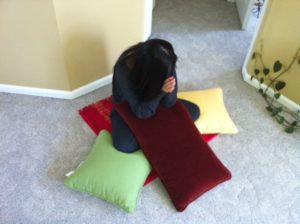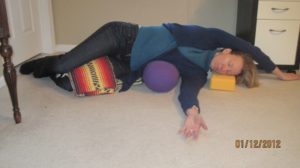Book Review
True Yoga or How to Bring the Yoga Sutras Alive
This incredible book by my friend and colleague Jennie Lee, is a practical, spiritual guidebook into the Yoga Sutras. The Yoga Sutras are the foundation for how we are in this world and how we are with ourselves. We practice asana (poses), breathing, meditation, relaxation and a host of other yogic tools but the Sutras are the threads which knit all of those practices together. Basically, why are we doing all of this? To seamlessly be able to incorporate these concepts into our lives is a blessing and True Yoga delivers this blessing and more. The Sutras are explained quite simply and beautifully in this book. Then at the end of each chapter, Jennie provides some practical ways to bring the Sutras into your life. I’ve only found a few books that can do this well. One other being Nischala Joy Devi’s book, The Secret Power of Yoga.
I invite you to pick up a copy of Jennie’s book online or borrow my copy. I recommend reading the entire book so you can get a taste of the Sutras then either find a Sutra that you want to study and practice in more depth or go to my favorite Sutra, which is II.35 Ahimsa (non-harming). That seems to be a good starting point for many of the other Sutras.
For more information on Jennie Lee, visit her website, https://jennieleeyogatherapy.com
Breath
Alternate Nostril Breath
This breath invites the calm in, balancing both sides of our nasal passages and our brain. We tend to breath predominately with either the left or right nasal passage and we become unbalanced. A few minutes at the start of a class or practice, can merge the two hemispheres of the brain and allow you to become more receptive.
Breathing through the right or left nostrils gives different effects.
increases heart rate, increases verbal performance, stimulates left brain, increases rate of blinking
Left Nostril decreases heart rate, increases spatial performance, stimulates right brain, reduces rate of blinking,
Extended Breath Practice
Take a long breath in and a long breath out then two regular breaths. This is one cycle.
Continue this pattern for 9 more cycles, for a total of 10.
Observe how you feel both during the practice and afterwards. Notice the pace, the tension or calm areas of your body, your thoughts and emotions and anything else that comes up for you.
The Practice: Find a comfortable seat or laying down. Using the right hand, bring the middle and index fingers to rest toward the palm. Alternatively, they can be placed at your third eye (forehead area). Begin with even breaths through both nostrils, gently close off right nostril, then inhale through left nostril and exhale through the right nostril. Gently close off left nostril, as you inhale through right and exhale through left. Keep the same count for both sides. That is one round. Repeat for 5 to 6 rounds or more. Tongue comes to rest on roof of mouth.
Other variations of this breath are:
- Retaining the breath after the inhale while keeping both nostrils gently closed.
- Extending the exhale longer than inhale
- Cessation of breath after the exhale, with only one nostril closed
Poses
Forward fold*, **
Props: chair, 2-4 blankets, neck rolls or bolsters
Benefits: releases the pelvis which can help release tension in the buttocks, hips, belly and lower back. Quiets the organs of digestion and elimination. Opens lower back area. As head rests on bolster, releases tension in frontalis where we hold stress in contracted state. Cooling and calming to overall body and provides a nice transition from day. Can help with sleep.
Add a folded blanket to seat of chair and another for you to sit on. You will straddle the chair bringing it in as close to your body as possible to support you as you forward fold. Rest arms on the chair. Avoid too much pressure on the eyes. To lesson any strain in the lower back, sit on a single or double-fold blanket. Can add blanket rolls under the knees. Stay for 5 to 10 minutes.
*note that for some students the breath can be constrained. Practice belly breaths to begin with.
** our class practiced this with two bolsters stacked and legs crossed.
Side Lean
Props: bolster, 2 or 3 pillows or blankets
Benefits: Stretches the torso and provides a gentle twist which allows a release in tension in the lower back area.
Lie on right side of bolster with hip at the base of it. Torso should rest on the stack. Right arm should be under the head. The left arm can reach over the head to increase the stretch. Close your eyes and allow your body to relax and release any stress or tension. Slowly sit up and switch sides for the same amount of time.
Focus on your breath. Breath into your right side allowing that gentle stretch to travel from the tip of your fingers down your lower spine. Sense the left side of your body gently melting and surrendering to the ground beneath you. All tension and stress being recycled by mother earth. Sense the gentle letting go of your muscles and knowing that you are safe and supported. Breath deep and exhale soft and long.
Grounding Version – extend legs so that feet touch the wall. Add extra blankets or bolster along spine to support your back. Cover with a blanket for extra comfort.



Leave A Comment